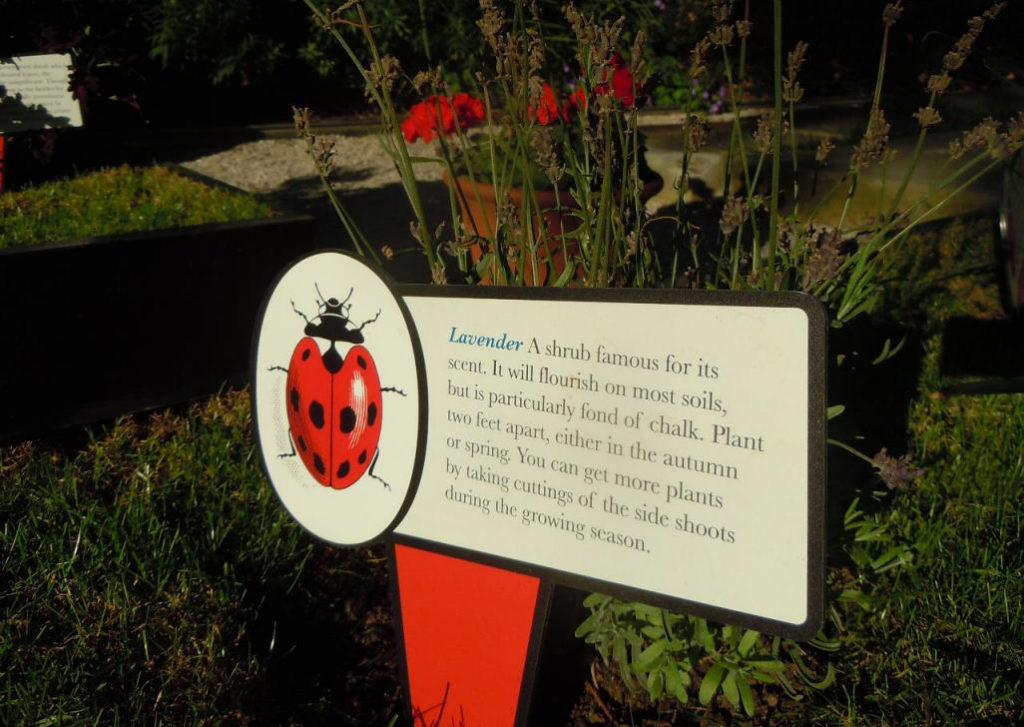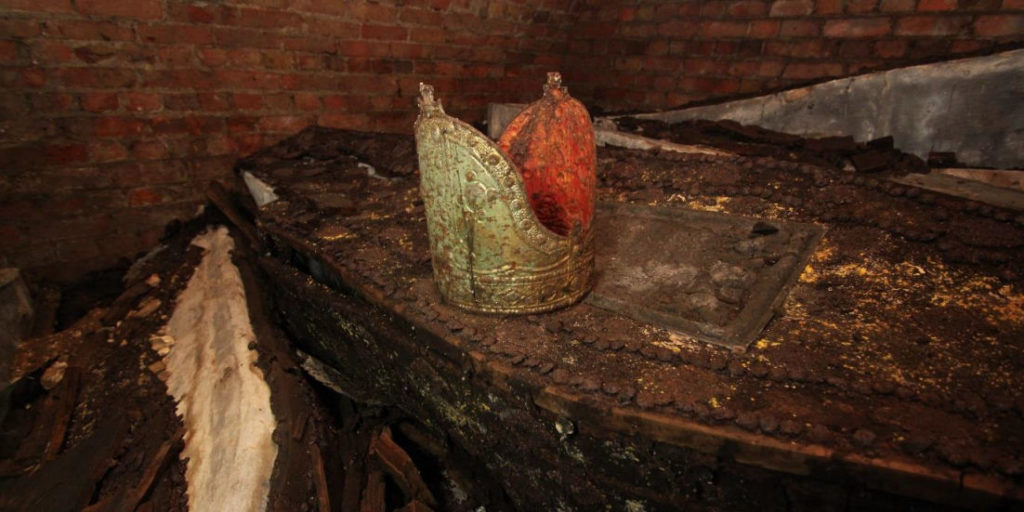It has been a while since I penned a piece on behalf of the MPGA. Again, I’ve had a very busy summer, gardening for myself and my clients, as well as visiting many gardens both home and abroad. Recent garden visits have seen me in the Cotswolds and, as always, with the New Perennialist in me, luring me to gardens in Holland and Germany. However, somewhat closer to home, I recently met Christopher Woodward, Director of the Garden Museum, which is adjacent to Lambeth Palace and close to Lambeth Bridge.
For me, the Garden Museum has always held a fascinating position within the horticultural arena. Unlike your conventional museum, which can remain fairly static, usually housing permanent displays with occasional exhibitions, the Garden Museum introduces us to the history of gardens (social, political, cultural etc), as well as showing us what is contemporary in garden thought, with a robust nudge towards the future – more of that later!
Through its eclectic displays of tools, artwork and gardening ephemera the Museum offers the visitor a wealth of garden history. As one walks slowly around its various galleries which chart the evolution of gardening, within the calm spirit of this deconsecrated church, one feels in a very safe space, walking among many like-minded green-fingered folk: both past and present.
What is both contemporary and worthy within today’s horticultural world, is demonstrated in areas such as the Museum’s commitment to education, community and outreach projects. During Christopher Woodward’s time at the museum, he has increased educational visits from one or two per year to a staggering 52 school visits last year!
The large Clore Learning Space regularly accommodates both secondary school and sixth form students, along with the smaller Learning Studio which acts as a teaching kitchen. This allows children to link food making with garden making and, in doing so, turns their attention towards the history of both.
Innovative plantings by top RHS gold winning designers, such as Dan Pearson and Christopher Bradley-Hole, surround the Museum itself and showcase high end horticultural design.
I find garden design within London spaces fascinating: I visit London’s green spaces, with notebook in hand, to learn the lessons of how to design with shade in mind. With its high-rise buildings and tree-lined streets and parks, London gardens are always very verdant, and the Garden Museum is no different. Under such circumstances chlorophyll will, almost always, win the war against colourful and pretty flowers.

Five or six annual Cosmos struggling to provide flower over foliage, but with striking leaf structure none-the-less.
In Lambeth, the Tradescants, the royal gardeners and plant hunters of the 17th century, were motivated to build an Eden on the banks of the Thames, and it was this inspiration and guide that was given to Dan Pearson’s design studio as the brief when conceiving the Museum garden’s extension back in 2017.
As one would expect from a designer as talented as Dan Pearson, the range and complexity of his planting plans at the Museum are too vast to explore in this small post. Needless to say, the planting complimented the brief perfectly, and what has been created is an oasis of verdant lushness, interesting and contrasting foliage, as well as many horticultural curiosities to keep even the most knowledgeable of us interested and enthralled. Pearson’s planting plan is available on-line, and I would thoroughly recommend you to seek it out: a fascinating pre-visit read.
The Sackler Garden, with its central courtyard space, provides a home for the tomb of John Tradescant and is surrounded by plants such as Melianthus major, Danae racemose, Nandina domestica, a majestic Tetrapanax, along with several Hydrangeas. Citrus and fig trees sit closely to climbers such as Akebia, Jasmin and Passion Flower.
Christopher Woodward was a very kind host, giving me his time as well as a welcome cup of tea and biscuits – lovely! He showed me several elements of the archival stores, including a recent book collection donated by Sir Roy Strong, as well as catalogues and material supplied by Elphick’s Nursery of Lewes, East Sussex: a family run business dating back to 1823.
We then walked around the current exhibition which looks at the golden age of Ladybird books. The collection, on loan from Random House, was complemented by some amazing artwork which adorned the walls, and covered the period 1940 – 1980. There was also a Ladybird book donated by one … Alan Titchmarsh. Funny to see how Alan (the child) had inscribed his book, misspelling his own surname.
Personally, I loved the way this exhibition was linked to the raised-bed plantings in the garden. Healthy plant displays were clearly signposted with interesting text on the plant itself and its cultivation.
Historically the MPGA has strong links to the Garden Museum, which continue to the present day with the appointment of Christopher Woodward, as one of the MPGA’s Vice Presidents. Prior to the renovations in 2015, the Association gave several donations and grants to the Museum towards planting, as well as gifting potted perennials, which were kept in readiness for the proposed development. Back in 2012, the MPGA’s Annual General Meeting was held at the Museum and again the event is being held there in 2019. In addition, last year the London Spade was awarded to the Garden Museum at the Association’s AGM. It was received by Christopher Woodward, who was also the invited speaker and gave a most interesting and fascinating talk.
One of the features at the new Museum is the tile wall in the Courtyard, made up of donated tiles featuring plants, flowers and gardens. The MPGA tile was sponsored by Joyce Bellamy MBE, a longstanding previous Secretary of the Association. The chosen tile shows Arlington Square, a wonderful community garden in Islington and, coincidentally, the subject of my first MPGA blog. The tile was a reminder of what drives the MPGA and the various gardening communities in London to do what they do. That is to help create and maintain the green lungs of this great city, whilst all the while bringing people together in this shared ambition!
Before I left, Christopher Woodward went on to show me the major developments proposed for Lambeth Green. Changes are being discussed regarding the layout of the roundabout which currently navigates vehicles and pedestrians around the junction of Lambeth Bridge. I saw the plans, again with the involvement of Pearson’s design studios, which would see the Museum and its green spaces push out much further into the surrounding area. I guess it’s early days for this grandiose idea, but with the controversial void left by the defunct Garden Bridge project, there definitely feels scope for a push forward of this kind … and was there ever a more suitable location for such ambition? Interesting times indeed.
Anyway, sadly I’ll have to end this post here. I say ‘sadly’ as I feel I’ve had to resist leaving you any more enticements to visit this very interesting site. I haven’t really touched upon the huge horticultural relevance of the Tradescants, or the various phases of the recent £3.5 million development at the Museum. Also the discovery of 30 coffins, including those of five ex-Archbishops of Canterbury, found during renovations in 2016. Although the tomb containing the coffins is not open to the public, there’s a small square hole in the floor from which one can look down and see the glistening mitre shown below, which sits on one of the coffins.
If you haven’t already done so recently, my advice would be to go and see the Museum for yourself. Also, perhaps get involved with the Museum in some way. Look at their excellent website, see what’s going on there, and navigate your way to their ‘Join & Support’ pages where you’ll find lots of ways to get involved.
A big thank you to Christopher Woodward for his time and hospitality.
Marc Owen








